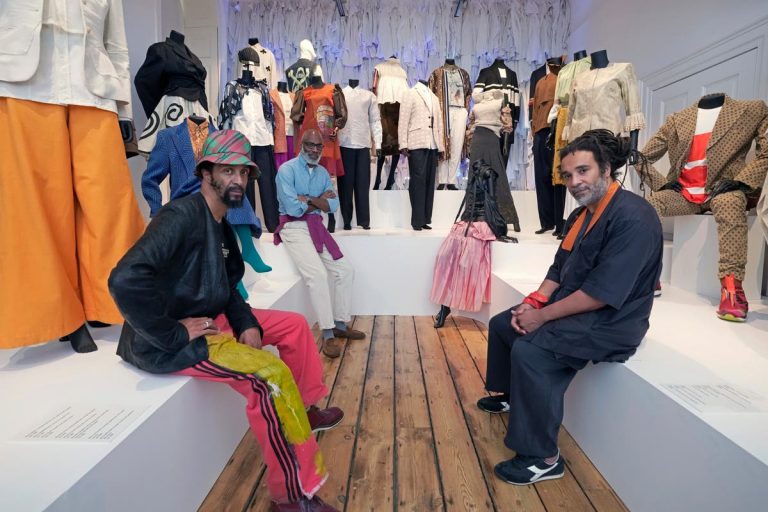Sign up for breaking news emails to get free real-time breaking news alerts sent straight to your inbox.
Sign up for our free email updates
A new exhibition opening in London is set to reveal for the first time the contribution of black British culture to the history of British fashion and design, celebrating previously underrepresented black designers.
“The Lost Thread: The Untold Story of Black British Fashion,” an exhibition opening Thursday at Somerset House in central London, pays tribute to the influence of black designers on the fashion world of the 1970s, but also highlights the racism and other barriers they faced in an industry that remains difficult for people of color to break into.
The curators say the idea of an exhibition celebrating black fashion and culture had been around for some time, but it wasn’t until the death of George Floyd at the hands of US police in 2020 that sparked protests around the world against racism that momentum grew for an exhibition that would also address broader social and political contexts, such as the rise of anti-immigrant sentiment and overt racism in Britain in the 1970s and 1980s.
“People may have heard of these designers, but they don’t know the trials and tribulations they went through,” said Harris Elliott, one of the exhibition’s curators.
The exhibition begins with a tiny house-like entrance made from colourful tape measures. Elliott, who created the installation, said the house symbolised the fragility of hopes and dreams experienced by early Caribbean migrants to Britain, many of whom were skilled tailors but were ignored on arrival.
“You come as a tailor, but you end up working in a factory or on a bus,” Mr Elliott said.
One success story is Bruce Oldfield, the veteran couture designer who worked closely with Princess Diana and recently designed Camilla’s coronation gown. Oldfield was one of Britain’s first notable black designers in the 1970s and 1980s, and the exhibition includes a glamorous red silk embroidered dress worn by Diana in 1987.
But Oldfield, whose father is Jamaican, is rarely mentioned as a black designer or an advocate for black culture.
A large part of the exhibition is dedicated to the work of Joe Casely-Hayford, a black fashion designer from the ’80s and ’90s who is little known or forgotten in mainstream fashion history, but who worked with U2 and inspired a generation of black Britons, and who curators say should have received the same recognition as more famous designers like Paul Smith and Vivienne Westwood.
Andrew Ibi, one of the exhibition’s curators, said he hoped the exhibition would inspire more young black people to enter the creative industries.
“When you don’t see people like you, you think you can’t do it, and that was a big problem for black designers at the time,” Ibi says. “I hope this exhibition will be a legacy for young people who look at it and say, ‘I see this rich culture and I can do what I want. I can be an artist, a photographer, a designer.'”
“The Missing Thread” will run until January 7th.


